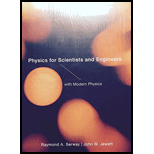
(a)
The total torques due to the weight of the hand about the axis of rotation when the time reads
(a)
Answer to Problem 72AP
The total torques due to the weight of the hand about the axis of rotation when the time reads
Explanation of Solution
Given information: The mass of hour hand is
Formula to calculate the net torque produced by the clock’s hand is,
Here,
Formula to calculate the angular speed of the hour hands is,
Substitute
Thus, the angular speed of the hour hand is
Formula to calculate the angular speed of the minute hands is,
Substitute
Thus, the angular speed of the hour hand is
Let take
Write the expression for the angular position of the hour hands at time
Here,
Substitute
Write the expression for the angular position of the minute hands at time
Here,
Substitute
Substitute
Substitute
When clock shows time
Substitute
Thus, the net torque is
When clock shows time
Substitute
Thus, the net torque is
When clock shows time
Substitute
Thus, the net torque is
When clock shows time
Substitute
Thus, the net torque is
When clock shows time
Substitute
Thus, the net torque is
Conclusion:
Therefore, the total torques due to the weight of the hand about the axis of rotation when the time reads
(b)
The all the time nearest to second when total torque about the axis of rotation is zero by solving the transcendental equation.
(b)
Answer to Problem 72AP
The time corresponding to the zero torque is given as:
| Time(hr) | Clock time |
| 0 | 12:00:00 |
| 0.515 | 12:30:55 |
| 0.971 | 12:58:19 |
| 1.54 | 1:32:31 |
| 1.95 | 1:57:01 |
| 2.56 | 2:33:25 |
| 2.94 | 2:56:29 |
Explanation of Solution
Given information: The mass of hour hand is
From equation (2), the expression for the total torque is given by,
Substitute
Since it is a transcendental equation, solving the equation numerically the values of time comes out to be 0, 0.515, 0.971, 1.54, 1.95……so on.
The time corresponding to the time is given as:
| Time(hr) | Clock time |
| 0 | 12:00:00 |
| 0.515 | 12:30:55 |
| 0.971 | 12:58:19 |
| 1.54 | 1:32:31 |
| 1.95 | 1:57:01 |
| 2.56 | 2:33:25 |
| 2.94 | 2:56:29 |
Conclusion:
Therefore, time corresponding to the zero torque is given as:
| Time(hr) | Clock time |
| 0 | 12:00:00 |
| 0.515 | 12:30:55 |
| 0.971 | 12:58:19 |
| 1.54 | 1:32:31 |
| 1.95 | 1:57:01 |
| 2.56 | 2:33:25 |
| 2.94 | 2:56:29 |
Want to see more full solutions like this?
Chapter 10 Solutions
Physics For Scientists And Engineers With Modern Physics, 9th Edition, The Ohio State University
- No chatgpt plsarrow_forwardhelp me with the experimental set up for the excel i did. the grapharrow_forwardWhich of the following best describes how to calculate the average acceleration of any object? Average acceleration is always halfway between the initial acceleration of an object and its final acceleration. Average acceleration is always equal to the change in velocity of an object divided by the time interval. Average acceleration is always equal to the displacement of an object divided by the time interval. Average acceleration is always equal to the change in speed of an object divided by the time interval.arrow_forward
- The figure shows the velocity versus time graph for a car driving on a straight road. Which of the following best describes the acceleration of the car? v (m/s) t(s) The acceleration of the car is negative and decreasing. The acceleration of the car is constant. The acceleration of the car is positive and increasing. The acceleration of the car is positive and decreasing. The acceleration of the car is negative and increasing.arrow_forwardWhich figure could represent the velocity versus time graph of a motorcycle whose speed is increasing? v (m/s) v (m/s) t(s) t(s)arrow_forwardUnlike speed, velocity is a the statement? Poisition. Direction. Vector. Scalar. quantity. Which one of the following completesarrow_forward
- No chatgpt pls will upvote Already got wrong chatgpt answerarrow_forward3.63 • Leaping the River II. A physics professor did daredevil stunts in his spare time. His last stunt was an attempt to jump across a river on a motorcycle (Fig. P3.63). The takeoff ramp was inclined at 53.0°, the river was 40.0 m wide, and the far bank was 15.0 m lower than the top of the ramp. The river itself was 100 m below the ramp. Ignore air resistance. (a) What should his speed have been at the top of the ramp to have just made it to the edge of the far bank? (b) If his speed was only half the value found in part (a), where did he land? Figure P3.63 53.0° 100 m 40.0 m→ 15.0 marrow_forwardPlease solve and answer the question correctly please. Thank you!!arrow_forward
 Principles of Physics: A Calculus-Based TextPhysicsISBN:9781133104261Author:Raymond A. Serway, John W. JewettPublisher:Cengage Learning
Principles of Physics: A Calculus-Based TextPhysicsISBN:9781133104261Author:Raymond A. Serway, John W. JewettPublisher:Cengage Learning Physics for Scientists and Engineers with Modern ...PhysicsISBN:9781337553292Author:Raymond A. Serway, John W. JewettPublisher:Cengage Learning
Physics for Scientists and Engineers with Modern ...PhysicsISBN:9781337553292Author:Raymond A. Serway, John W. JewettPublisher:Cengage Learning Glencoe Physics: Principles and Problems, Student...PhysicsISBN:9780078807213Author:Paul W. ZitzewitzPublisher:Glencoe/McGraw-Hill
Glencoe Physics: Principles and Problems, Student...PhysicsISBN:9780078807213Author:Paul W. ZitzewitzPublisher:Glencoe/McGraw-Hill Physics for Scientists and Engineers: Foundations...PhysicsISBN:9781133939146Author:Katz, Debora M.Publisher:Cengage Learning
Physics for Scientists and Engineers: Foundations...PhysicsISBN:9781133939146Author:Katz, Debora M.Publisher:Cengage Learning College PhysicsPhysicsISBN:9781305952300Author:Raymond A. Serway, Chris VuillePublisher:Cengage Learning
College PhysicsPhysicsISBN:9781305952300Author:Raymond A. Serway, Chris VuillePublisher:Cengage Learning College PhysicsPhysicsISBN:9781285737027Author:Raymond A. Serway, Chris VuillePublisher:Cengage Learning
College PhysicsPhysicsISBN:9781285737027Author:Raymond A. Serway, Chris VuillePublisher:Cengage Learning





